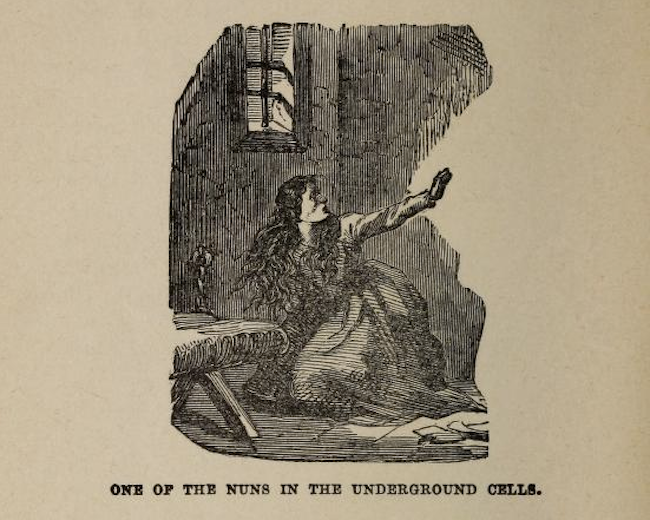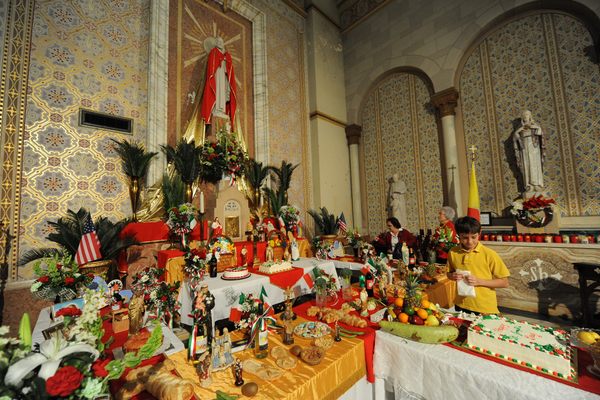Salacious Convent Exposés Were the Most Popular Books in Antebellum America
Protestant authors loved to imagine the secret sins of Catholics.

In 19th-century America, from the 1830s through the Civil War, one of the most scandalous settings an author could choose for a story was a Catholic convent.
It was the heyday of the “convent exposé,” a book, fictional or not, that purported to reveal the sin and salaciousness hidden behind the walls of religious institutions. In these books, sisters are kept captive, denied medical care, and sometimes raped or otherwise subject to sexual depravities. In the most disturbing of the stories, nuns dispose of unwanted babies by killing them shortly after they’re born.
These books, mostly forgotten today, were some of the most popular publications of their time. As Nancy F. Sweet, a literature professor at Sacramento State, writes, there were “dozens of other convent exposés, narratives, treatises, and romances published between 1829 and the outbreak of the Civil War.” After the most famous of these books, The Awful Disclosures of Maria Monk, was published in 1836, it became the best-selling book in America besides the Bible. It was outsold only when Harriet Beecher Stowe’s Uncle Tom’s Cabin came out in 1852.

These stories generally follow the same structure. A young woman enters a convent, moved by circumstance or the spirit to explore a religious life. She soon realizes that she’s made a terrible mistake. At best, she finds that the life of a nun isn’t the reflective, spiritual experience she imagined; at worst, nuns are subject to regular abuse. She’s usually kept from leaving but manages to escape to tell her story. Sometimes, though, there is no escape and she dies—trapped in the evil convent.
Many of these books were sold as fiction, but some of the best known, including Maria Monk, were supposed to be true—even though that best seller contained some of the most lurid details of all of them. Maria is dissatisfied at home, so she joins a convent, only to find she’s expected to have sex with the priests next door, who enter the convent through secret tunnels. When nuns inevitably become pregnant, their condition is hidden and their babies murdered and buried in the basement. After the book was released, though, journalists tracked down the titular author and found that her book had been ghostwritten by a group of anti-Catholic men, who made up most of the story. (Monk was a real person, who had contact with Catholic institutions but never lived in the convent featured in the book. The most lurid revelations were entirely fictional.)
But some of the books had elements of truth to them. Another famous example, Rebecca Reed’s Six Months in a Convent, was based on the author’s experience as a novice at the Ursuline convent of Charlestown, just outside of Boston, in the 1830s. Reed’s tale was less salacious than Monk’s, but she wrote that she had been forced to submit to penance and other cruel punishments far beyond what was considered reasonable. Her book was published with the help and oversight of a Protestant pastor, and her claims were never debunked, as Monk’s were.
Though less dramatic than many other exposés, Reed’s story was enough to rile up Americans worried about Catholic incursions into their Protestant strongholds. After the details began to circulate through Boston, a mob attacked the convent, destroyed its gardens, and burned part of it down.

Why were these books so popular? In addition to the tempting, salacious content, at the time they were published, Protestant America was being transformed by Catholic immigrants, and the Catholic Church was becoming the largest single religious institution in the country. But though anti-Catholic prejudice and fears contributed to the popularity of these books, some scholars see another explanation for their popularity.
Although the women in convent narratives were often in danger, they were pushing the boundaries of what was expected of women at their time. As Sweet writes, the appeal of the books included the “pleasure antebellum readers attained through exposure to the subversive potential of symbolical border-crossing”—and sometimes literal border-crossing. In some of these stories, the hero travels across Europe or into the North American wilderness as part of her escape from convent life. If these books were warnings about the dangers of Catholicism, they were also invitations to imagine how an encounter with sin might also be the start of an adventure.














Follow us on Twitter to get the latest on the world's hidden wonders.
Like us on Facebook to get the latest on the world's hidden wonders.
Follow us on Twitter Like us on Facebook